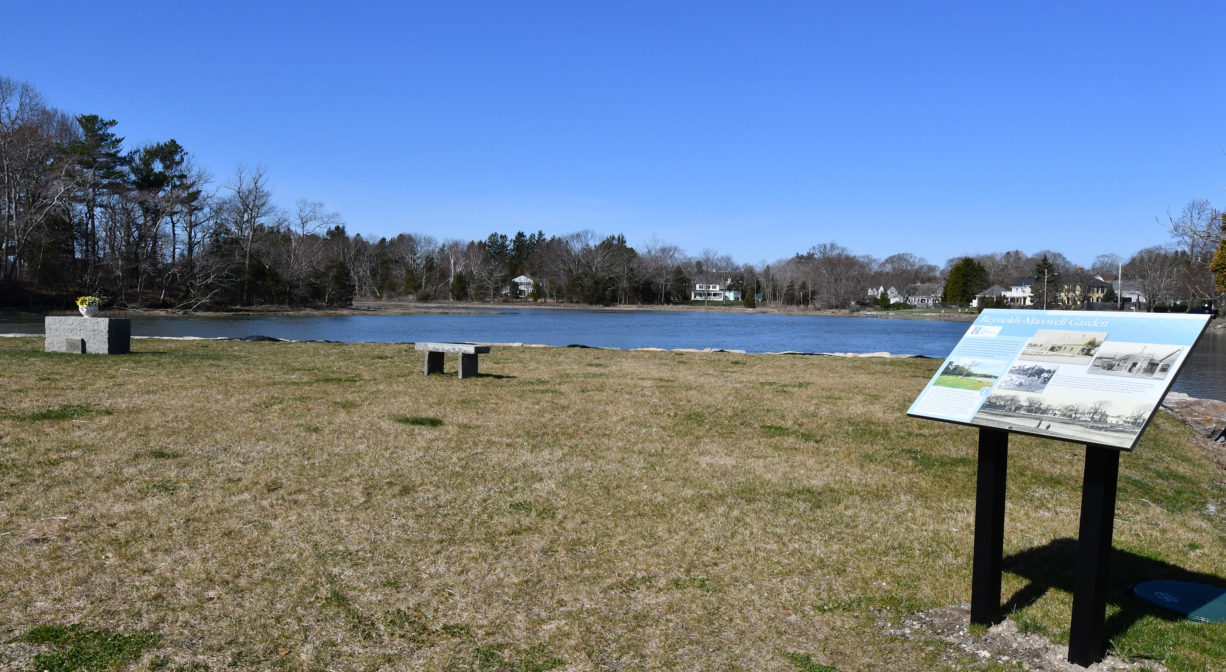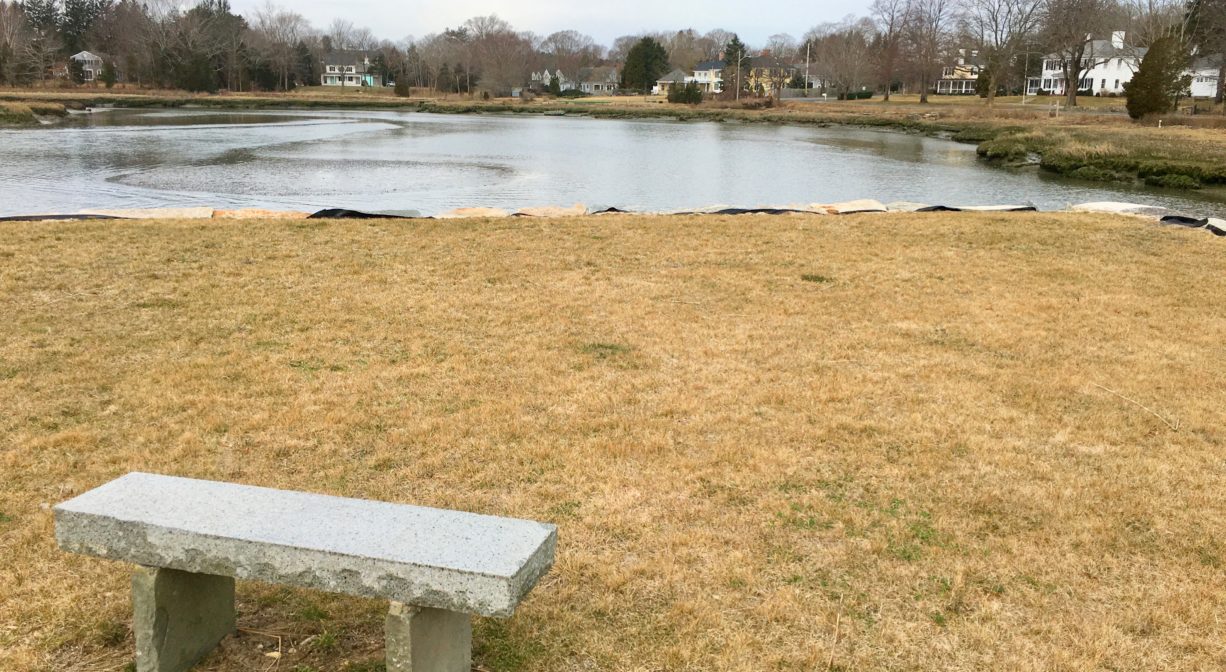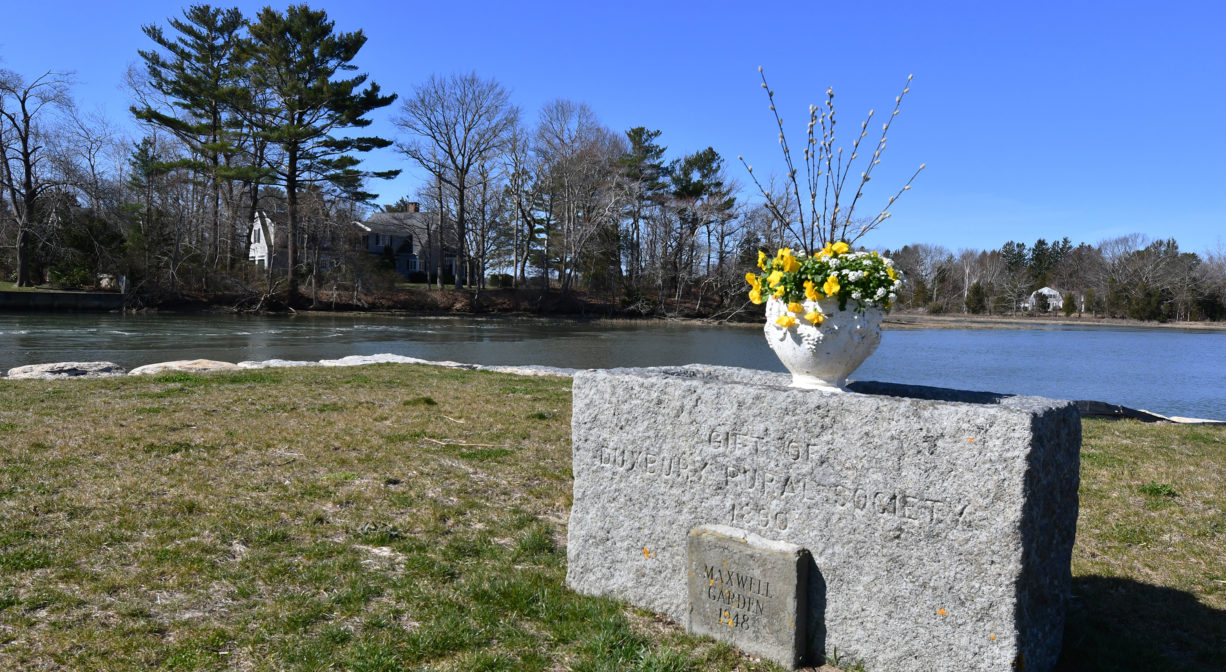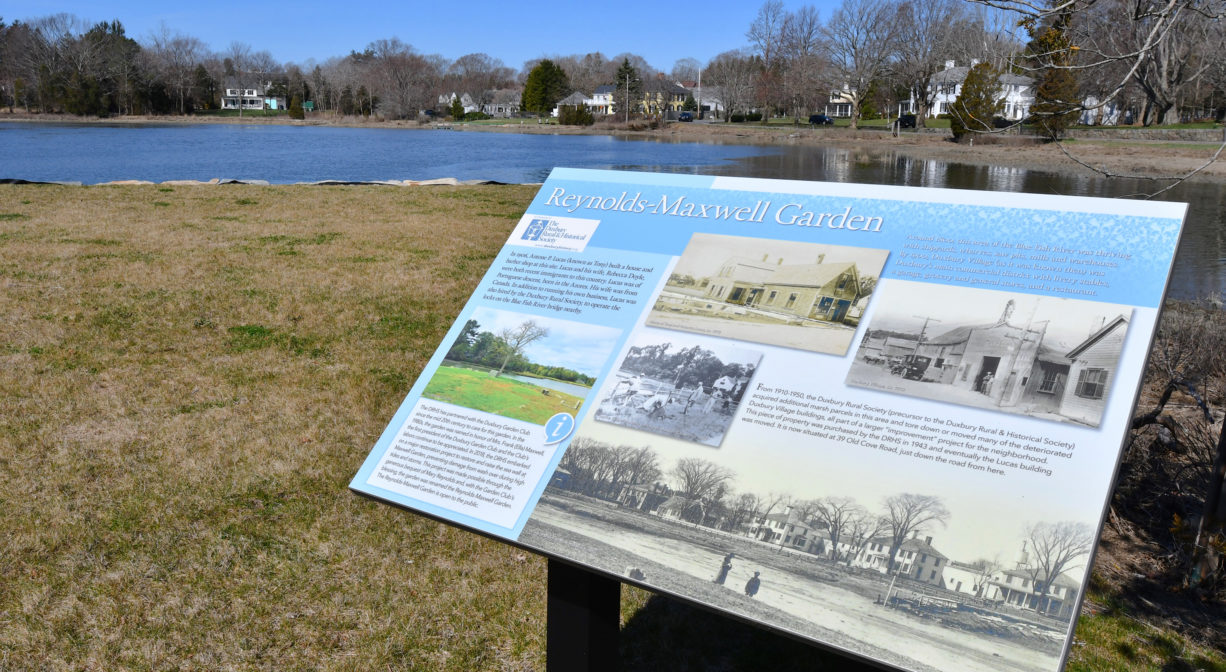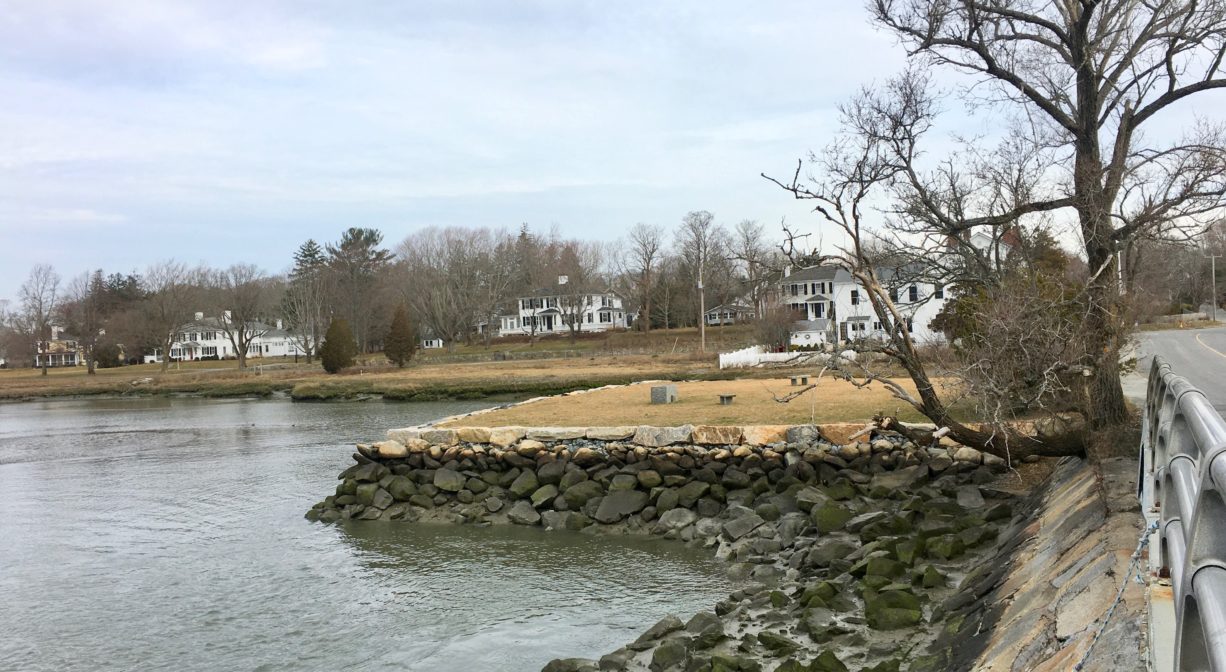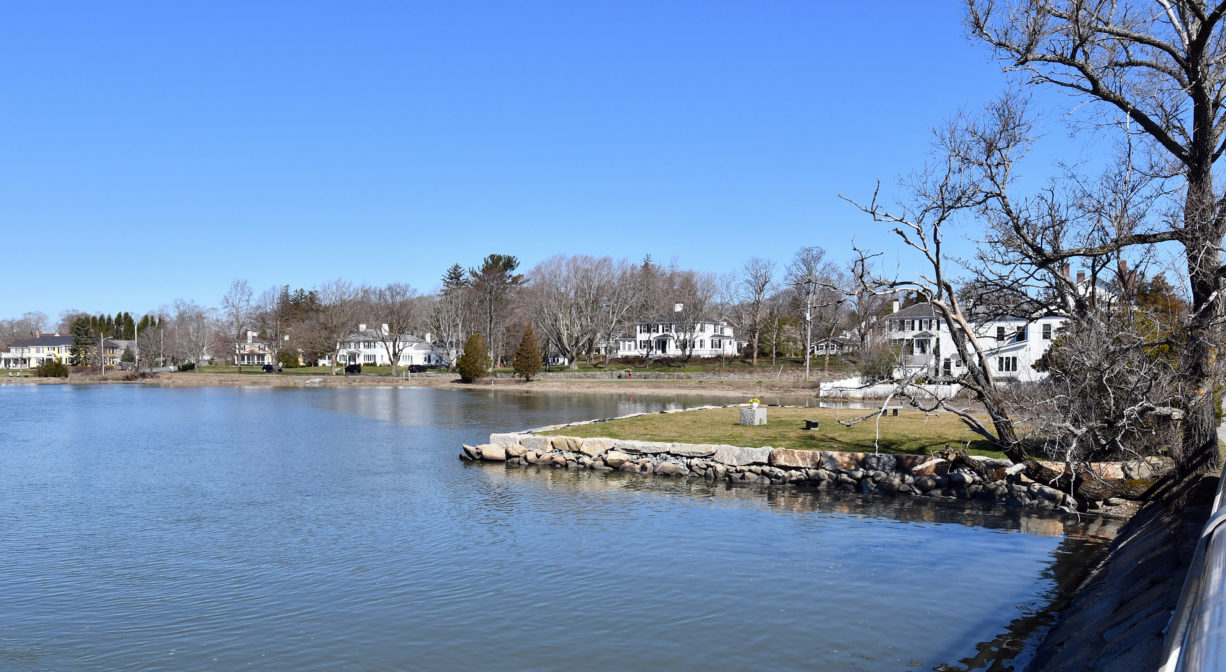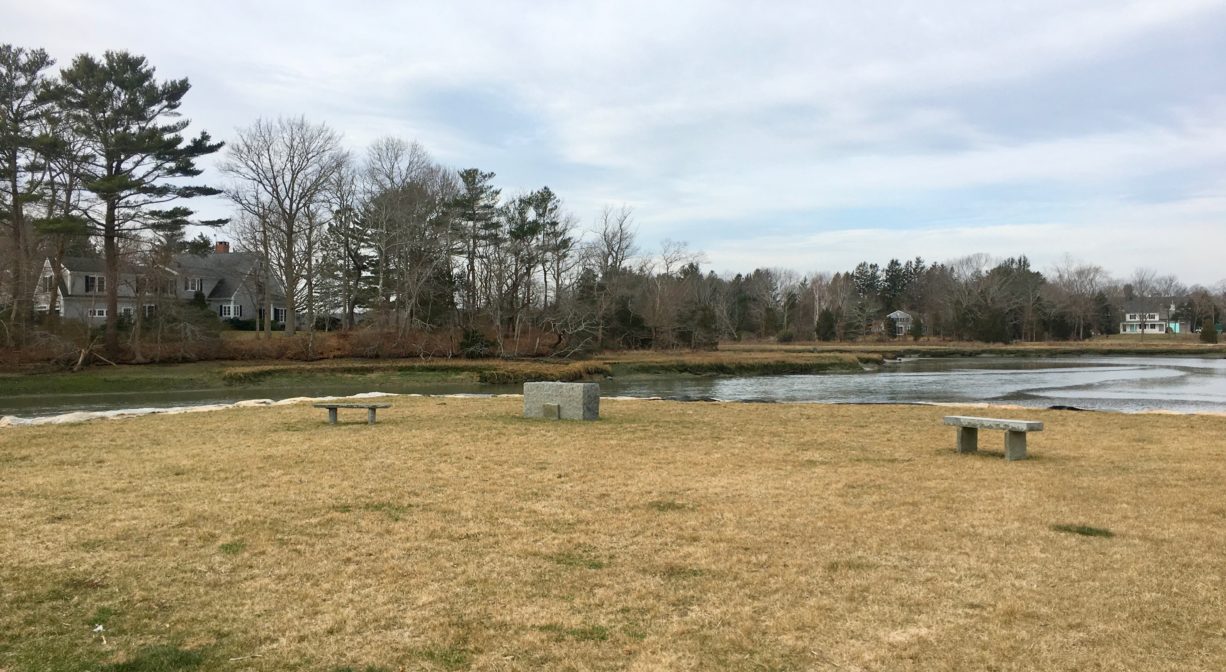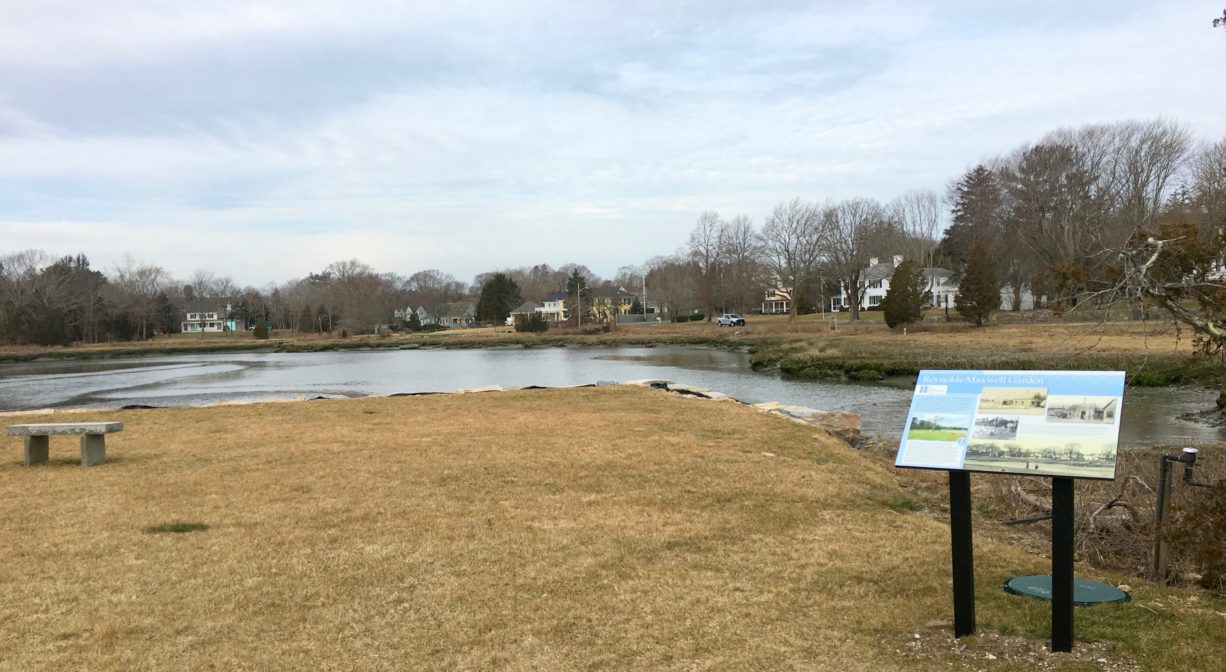645 Washington St, Duxbury, MA 02332, USA
Town of Duxbury: 781-934-1100 and Duxbury Rural and Historical Society: 781-934-6106
https://duxburyhistory.org/lands/maxwell-garden/
Owned By: Duxbury Rural & Historical Society and Town of Duxbury
The Reynolds-Maxwell Garden is a tiny park located within Duxbury’s Old Shipbuilders District. Constructed atop an old wharf, it offers beautiful views of the Bluefish River. Across the street is the Bluefish River Firehouse and Grist Mill, a scenic spot on the banks of the river with two historic sites.
Hunting is not permitted on these properties.
FISHING ADVISORY: It’s important to know that some of our freshwater fisheries are contaminated with mercury, PFAS and/or other concerning substances. The Massachusetts Department of Public Health maintains an online database with up-to-date advisories regarding fish consumption, sorted by location. We recommend you consult this valuable resource when planning a fishing excursion.
Features
This section of Duxbury was very active during the early-mid 19th century, with shipyards, wharves, sawpits, mills and warehouses. By 1900, it was known as Duxbury Village, and served as the town’s main commercial district with livery stables, a restaurant, a garage, and more.
According to Dorothy Wentworth’s Settlement and Growth of Duxbury 1628-1870, the c. 1803 construction of a dam and drawbridge at this site was a contentious issue. But soon after the bridge was built, the Bluefish River estuary became an active shipbuilding center. Six shipyards, as well as related industries such as forges, sail lofts, and a rope walk were all present along the river. Shipbuilders here included Israel Sylvester and Deacon George Loring, who also operated an anchor forge and salt works.
The Bluefish River Firehouse, originally known as Engine Company #1, originally stood on St. George Street, next to what was then the town library (c. 1906). In 1908, the building was moved to its present location on the Bluefish River, to make room for the construction of the Wright Building. It served as a firehouse until the central fire station was built in 1968. It is now used as a boathouse for the Harbormaster.
The Bluefish River Grist Mill dates back to 1766, when a mill and dam were established at this spot. It was a tide mill, powered by the incoming and outgoing tides. During Duxbury’s shipbuilding era, after the construction of a bridge here, mills to power ship smith and gunsmith shops were added. The last mill at this location was demolished in 1877.
In 1906 on the site where the Reynolds-Maxwell garden now stands, Antone P. “Tony” Lucas built a house on the property that is today Maxwell Garden, and later ran a barbershop and grocery store out of the building. He also operated the locks on the Bluefish River bridge. The property was purchased by the Duxbury Rural & Historical Society in 1943. For more than 70 years, the Duxbury Garden Club maintained the property, and in the 1980s, they named in honor of Mrs. Frank (Ella) Maxwell, the first president of the Duxbury Garden Club. The property was restored and improved in 2018 by the Duxbury Rural and Historical Society, raising the sea wall to prevent damage during high tides and storms. Since the restoration was made possible through a generous bequest from Mary Reynolds, the property was rededicated as the Reynolds-Maxwell Garden.
This land is within the region of the Patuxet Wampanoag tribe, who for centuries have inhabited the area around the Jones River now known as Duxbury, Kingston and Plymouth. To learn more about local Native American tribes, we encourage you to interact with their members. The Mashpee Wampanoag and the Herring Pond Wampanoag share information on their websites.
Habitats and Wildlife
The Bluefish River originates in ponds and springs between Duxbury’s Station & Washington Streets and Partridge Road, and flows north, parallel to the coast, to the Cushman Preserve. From there, it turns east, passing the Reynolds-Maxwell Garden and flowing under Washington Street, where it opens up into a broad estuary. The Bluefish River merges with the Duxbury Back River in Duxbury Bay.
Historic Site: Yes
Park: Yes
Beach: No
Boat Launch: No
Lifeguards: No
Hours: Dawn to Dusk
Parking: Limited on-site parking at 645 Washington Street. There is also bike rack.
Cost: Free
Facilities:
Benches, interpretive signage, historic markers.
Dogs: Dogs must remain on leash. Please clean up after your pet!
Boat Ramp: No
ADA Access: No
Scenic Views: Yes
Waterbody/Watershed: Bluefish River (Duxbury Back River watershed)


